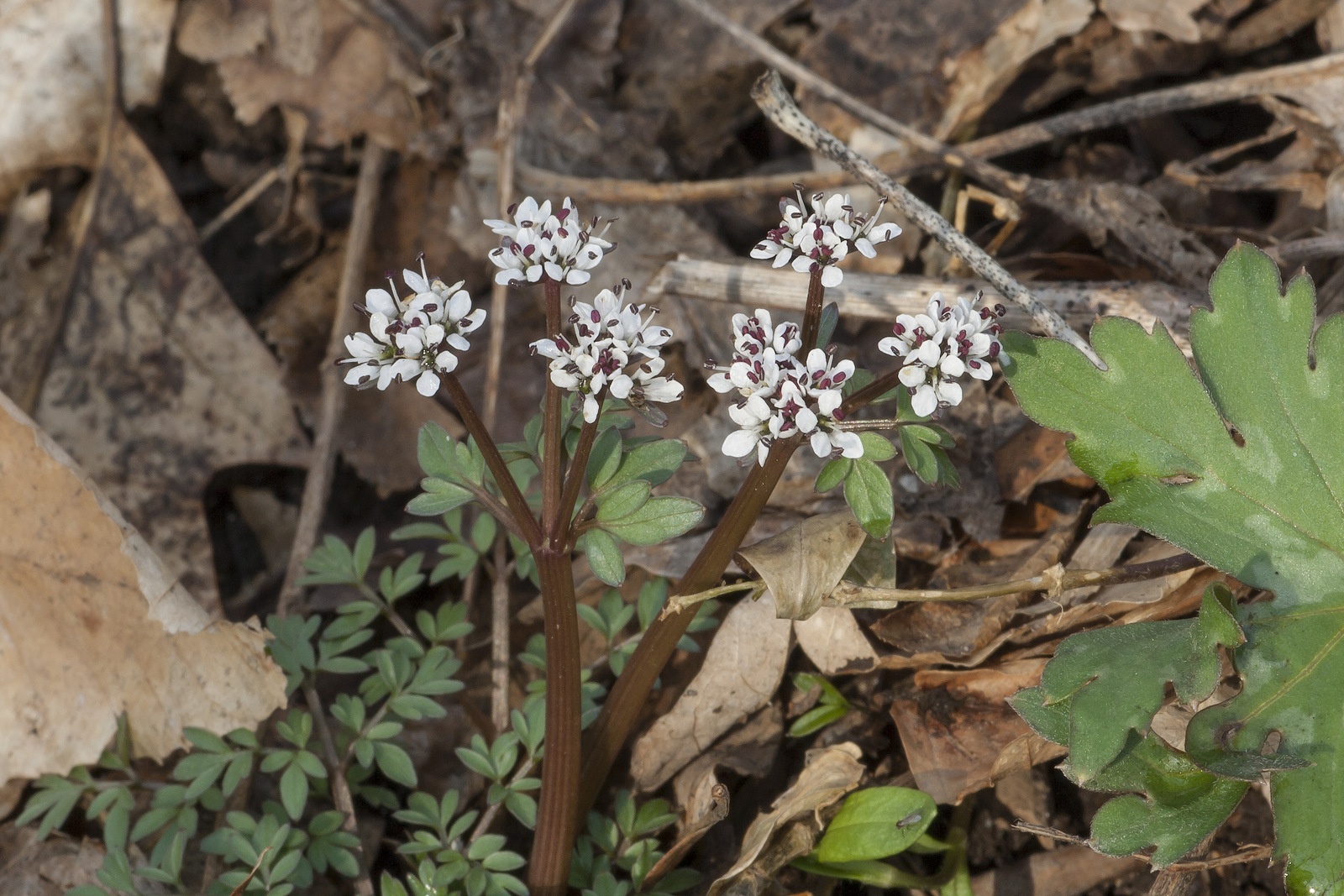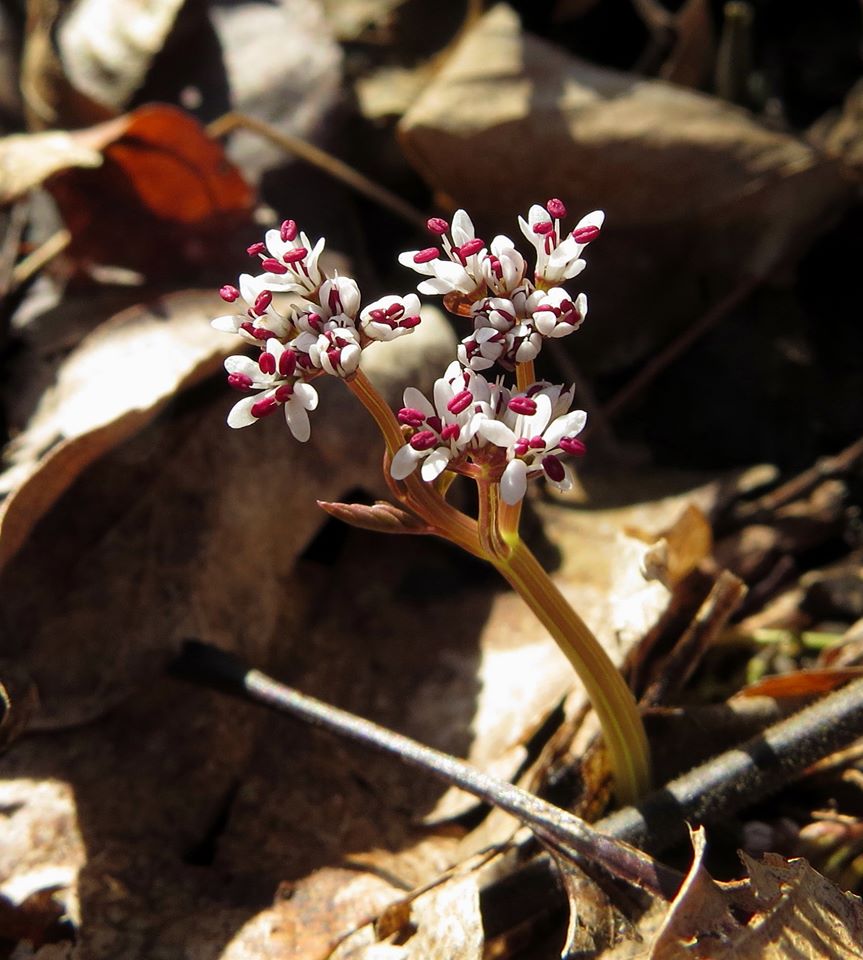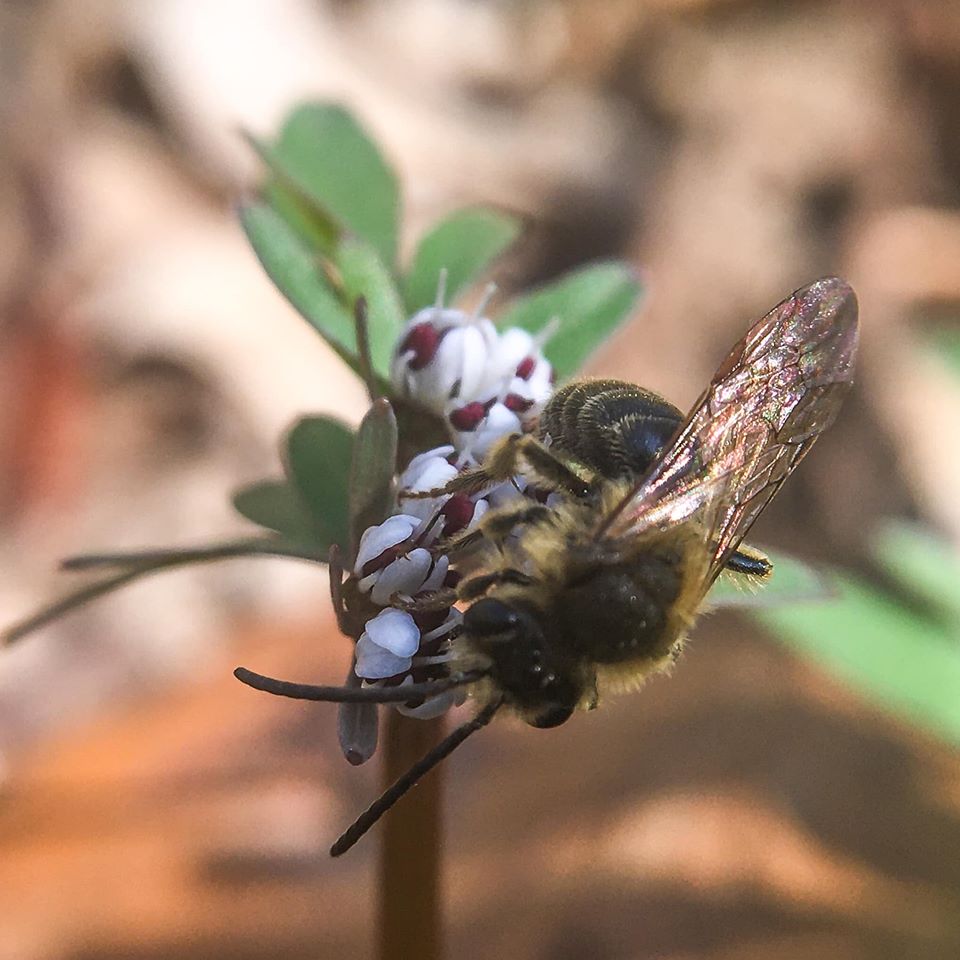ECOLOGY ▪ EDUCATION ▪ ADVOCACY







Erigenia: Greek for “born in the spring.”
bulbosa: from the Greek bolbos for “plant with round swelling on an underground stem.”
air-uh-gee-nee-uh or air-uh-gin-eye-uh bul-bohs-uh
Ground nut, pepper and salt, turkey-pea, turkey-foot

Life Cycle: Perennial. Although small in size, harbinger-of-spring is beloved by many as one of the earliest flowering native woodland wildflowers. A “true” spring ephemeral, the tiny plant emerges in March, flowers, and develops fruit by April, but long before summer begins, little to no trace of Erigenia remains above ground. The energy produced in that short time is stored underground until it reemerges the following spring.

Stems: Typically about 15 cm (6 in) long, glabrous, longitudinally ridged, with colors ranging between shades of greens, purples, and browns. Single or multiple stems grow both erect and in spreading horizontal fashion.

Leaves: Palmately compound and trifoliate. Basal leaves petiolate and typically up to about 12 cm (5 in) long and slightly less across at maturity. Upper leaves are similar but smaller with shorter petioles. Leaflets deeply divided.
Flowers: The inflorescence consists of compound umbels located at the tip of each stem. Within each umbel are typically 3–4 sessile umbellets, subtended by bracts. Each umbellet contains several small, delicate flowers. Each perfect flower consists of 5 white petals, each 3–4 mm (~1/8 in) long, no sepals, one white, divided styles, and 5 stamens with red anthers that turn black with age. Bees are the primary pollinators.
Fruit: The nearly round, somewhat flattened fruit is approximately 5 mm (3/16 in) in diameter and contains a single seed.
Key Characteristics: When identifying harbinger-of-spring, look for the following characteristics:
Similar Species: Other small, early spring flowering plants with white petals include the exotic hairy bittercress (Cardamine bulbosa) and chickweed (Stellaria media), along with the native false mermaid weed (Floerkea proserpinacoides). However, harbinger-of-spring is the only one of the four with palmately compound leaves and flowers in umbels.
None identified.
In Flora of Indiana, Indiana State Forester Charles C. Deam wrote that Erigenia bulbosa is found “throughout the state” (Deam 1940).


| Toggle Map Layers/Key | ||
|---|---|---|
| GAIN WP records |  |
|
| Combined herbarium records |  |
|
| No records |  |
In Indiana, Harbinger-of-spring is most frequent in rich, mesic, beech/maple, and riparian forests.
This chart represents the data collected from the GAIN WP project.
Culinary: The tuber is edible, both raw and cooked (Peterson 1977).
Functional: None identified.
Medicinal: The Cherokee chewed (presumably the tuber) to treat toothaches (Moerman 1998).
Landscape: Although the flowers and leaves of this ephemeral plant are only around for a short time, harbinger-of-spring blooms earlier than nearly all other Indiana woodland plants and provide early interest to a shady, woodland garden. In her 1999 book Go Native!, author Carolyn Harstad said that it transplants easily and to “plant a mass of this tiny ephemeral close to the path to enjoy as you stroll through your woodland garden” (Harstad 1999).
None identified
Unknown
None identified
Although the flowers contain only small amounts of nectar, harbinger-of-spring has the advantage of flowering when few other plants are. In March and April, numerous bees and flies visit the flowers.
| Known Faunal Associates in Indiana | ||
| Family | Taxonomic Name | Common Name |
|---|---|---|
| Class: Insecta | ||
| Order: Diptera | ||
| Anthomyiidae | root-maggot flies | |
| Calliphoridae | Calliphora spp. | blow flies |
| Chloropidae | frit flies | |
| Lonchaeidae | lance flies | |
| Sarcophagidae | flesh flies | |
| Scathophagidae | Scathophaga furcata | no common name |
| Syrphidae | syrphid flies | |
| Brachypalpus spp. | hover flies | |
| Tachinidae | Gonia frontosa | no common name |
| Order: Hymenoptera | ||
| Andrenidae | Andrena spp. | mining bees |
| Apidae | Apis mellifera | European honey bee |
| Ceratina spp. | small carpenter bees | |
| Halictidae | Halictus spp. | halictid bees |
| Lasioglossum spp. | sweat bees | |
| Megachilidae | Osmia spp. | mason bees |
None identified
 5: Secure
5: Secure  NR: Not ranked
NR: Not ranked
The images and records below were all submitted by individuals through the Great American Indiana Nature Wildflower Project (GAIN WP).
In addition to the primary bibliography, the authors have referenced the following sources:
Baskin JM, Baskin CC. 2002. Propagation protocol for production of container (plug) Erigenia bulbosa (Michx.) Nutt. plants. Lexington (KY):University of Kentucky. [accessed 2020 Apr 18]. http://NativePlantNetwork.org.
Cornell University. 2019. Common Yellowthroat Life History. Allaboutbirds.org. [accessed 2020 Apr 2]. https://www.allaboutbirds.org/guide/Common_Yellowthroat/lifehistory
Robertson C. 1895. The philosophy of flower seasons, and the phaenological relations of the entomophilous flora and the anthophilous insect fauna. The American Naturalist Vol XXIX.